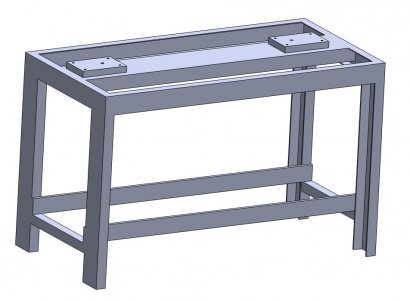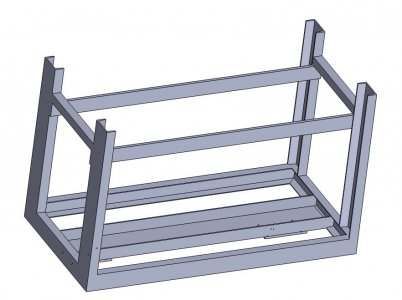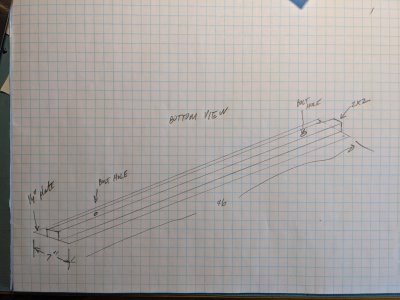The dual prongs of this discussion are amusing. One is “just try it you may need nothing” and the other is how to best achieve the ability to control bed twist. If your need to control bed twist is minimal, then your frame probably doesn’t need much in the way of modification. Yes, it will take a little longer to balance the adjustments while iterating toward the desired result, but overall time invested could be less (certainly money). In other words, you can achieve the same end point with very minor structural changes.
Yes, it is kind of weird. Can't say these kinds of discussions are unheard of on a machinist forum!
Attempted to take an RDM measurement with the bolts loose (finger tight on nut). Have a 20mm ground rod. Measured at 1" from chuck and 11" from chuck. Used an Interapid DTI. Was a little tough centering the vertical, as the QCTP moved when locking, but at least got close. (I'll have to deal with that later.) A measurement was made at 1" (centering the DTI in the correct plane) and then the carriage was moved to the new spot, 10 inches away.
In the H plane, I got a mean measurement of 8.65 at 1" and 6.65 at 11", measurements are in thousandths.
In the V plane, I got a mean measurement of 17.55 at 1" and 17.5 at 11", measurements are in thousandths.
So vertically, it is droop of the rod? (Like, don't worry about the vertical tilt.) Horizontally, the rod has an error of 0.002" over 10". This is all assuming that I did the measurement correctly. I clamped a Noga like indicator holder into an AXA QCTP holder. This was used to hold the DTI.
Raw measurements:
H @ 1". min: 8.3, max: 9.0, avg: 8.65
H @ 11". min: 3.3, max: 10.0, avg: 6.65
V @ 1". min: 17.5, max: 17.6, avg: 17.55
V @ 11". min: 17.4, max: 17.6, avg: 17.5




